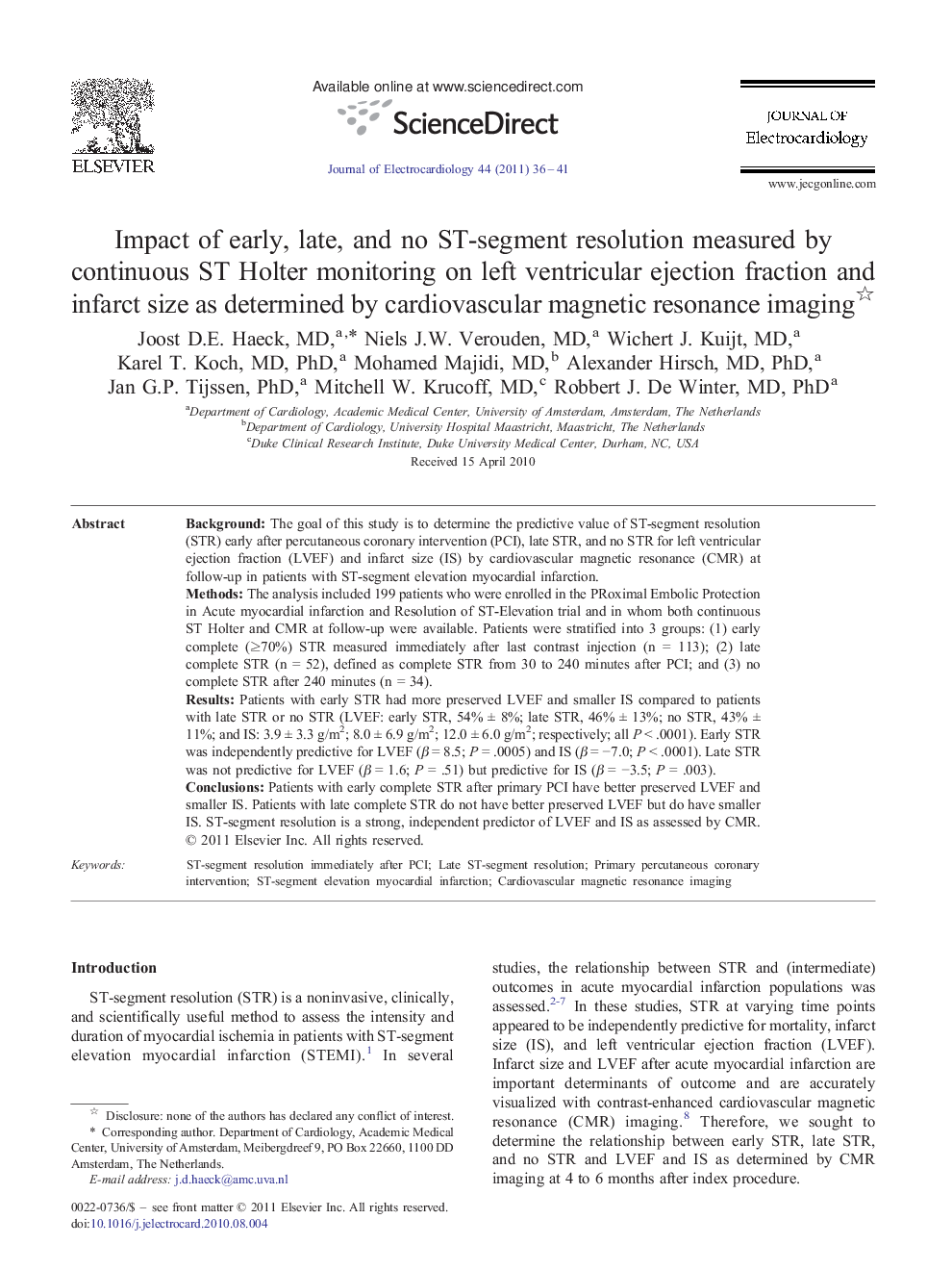| Article ID | Journal | Published Year | Pages | File Type |
|---|---|---|---|---|
| 2968529 | Journal of Electrocardiology | 2011 | 6 Pages |
BackgroundThe goal of this study is to determine the predictive value of ST-segment resolution (STR) early after percutaneous coronary intervention (PCI), late STR, and no STR for left ventricular ejection fraction (LVEF) and infarct size (IS) by cardiovascular magnetic resonance (CMR) at follow-up in patients with ST-segment elevation myocardial infarction.MethodsThe analysis included 199 patients who were enrolled in the PRoximal Embolic Protection in Acute myocardial infarction and Resolution of ST-Elevation trial and in whom both continuous ST Holter and CMR at follow-up were available. Patients were stratified into 3 groups: (1) early complete (≥70%) STR measured immediately after last contrast injection (n = 113); (2) late complete STR (n = 52), defined as complete STR from 30 to 240 minutes after PCI; and (3) no complete STR after 240 minutes (n = 34).ResultsPatients with early STR had more preserved LVEF and smaller IS compared to patients with late STR or no STR (LVEF: early STR, 54% ± 8%; late STR, 46% ± 13%; no STR, 43% ± 11%; and IS: 3.9 ± 3.3 g/m2; 8.0 ± 6.9 g/m2; 12.0 ± 6.0 g/m2; respectively; all P < .0001). Early STR was independently predictive for LVEF (β = 8.5; P = .0005) and IS (β = −7.0; P < .0001). Late STR was not predictive for LVEF (β = 1.6; P = .51) but predictive for IS (β = −3.5; P = .003).ConclusionsPatients with early complete STR after primary PCI have better preserved LVEF and smaller IS. Patients with late complete STR do not have better preserved LVEF but do have smaller IS. ST-segment resolution is a strong, independent predictor of LVEF and IS as assessed by CMR.
